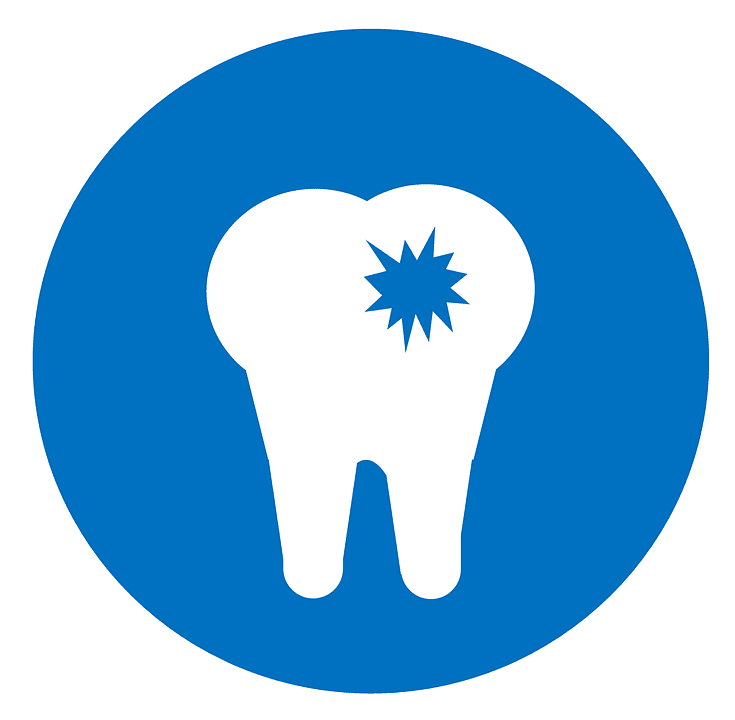Facts and Myths about Cavities

By the time we are able to brush our teeth on our own, most of us can remember being told about cavities. If you have ever needed a filling or other dental work, you may know a bit more about cavities than someone who is yet to have the experience. However, there are still some misconceptions about how we get them and what you should do about a cavity. Here are some common myths that surround cavities and the reality behind these misconceptions: Myth: If my teeth don’t hurt, nothing is wrong. Fact: By the time a tooth begins to hurt, it means the cavity and tooth decay has gone deep into the tooth and is now irritating the nerve. The longer you leave an issue, the more complex and expensive the treatment will be. Therefore, regular checkups are necessary to catch dental issues before they become extensive. Waiting for there to be an issue in the mouth before going to the dentist can mean the difference between a simple filling and a root canal. Myth: Sugar-free soda can’t cause cavities. Fact: Sugar is a huge contributor to the cause of cavities, as it creates a food source for harmful bacteria in the mouth, but it is not the only contributor. Anything that makes your mouth more acidic, such as diet sodas, can cause erosion. The harmful bacteria metabolize the sugar or acids left on your teeth and excrete lactic acid that creates small holes in tooth enamel. Myth: With good dental care, teeth can repair their own tooth enamel (remineralisation). Fact: Experts have said that teeth can replace some of the minerals that its enamel has lost. This process is called remineralisation and can slow or even stop decay. However, once bacteria and decay get through that enamel, the damage is done, and the erosion can not be reversed. The cavity has to be treated or it will continue to erode away at the tooth until it reaches the nerve. The nerve will eventually die. Depending on how long you leave a cavity, you could be looking at needing a root canal or a tooth removal. Myth: A filling is forever and can not get cavities. Fact: Although fillings can last for over a decade, they do eventually wear and break down. Tooth decay can not affect a filling but it can set in to the tooth around the edges of a filling or underneath the filling if it is broken. Myth: Cavities are for kids Fact: Anyone who has poor dental hygiene and consumes a lot of sugary food stuffs is at risk of developing cavities. Saliva is a natural buffer to all the acids in your mouth, so adults who smoke or take medications that cause dry mouth are at an even greater risk, as they have low saliva production. There is always a risk of developing a cavity, whether you are 6 or 76 years old. The important thing is to look after your dental health through daily care and regular dentist visits. At East Mountain Dental, you can be sure to get great dental care. Contact our Provo office today.
The Fuss about Floss

Every dental hygiene article will tell you that an adequate oral hygiene regime includes brushing your teeth twice a day and flossing at least once a day. However, according to data from the latest National Health and Nutrition Examination Survey, which was compiled in 2016, it states 32.4 % of American adults over the age of 30 never floss. The results also showed that 37.3 % of these adults floss but not everyday; and only 30.3 % floss on a daily basis. Other interesting findings include more men failed to floss when compared to women and low-income participants are less likely to floss than those in higher income brackets. But why do these statistics matter? What is the fuss about flossing? For one thing, these statistics are an indicator of why the Center of Disease Control finds a high prevalence of gum diseases in America, especially in the Southern States. What is gum disease? Gum disease in its most common form is called gingivitis. The symptoms include tender and swollen gums that bleed easily when brushed. Gingivitis can be caused by the failure to maintain oral hygiene. When someone neglects their oral hygiene, food particles can get stuck between the teeth and mix with saliva and bacteria in the mouth. This mixture forms plaque, which can harden into tartar that can not be removed through normal toothbrushing. The bacteria in plaque and tartar create acids that eat into our tooth enamel and create holes called cavities. Bacterial infection and tooth decay fester in cavities and can affect the gums, causing gingivitis. If left untreated, gingivitis can develop into a more advanced stage of gum disease, which can cause nearly irreversible damage to the gums, teeth and jawbone. Flossing ensures that food particles do not get stuck between our teeth, where our toothbrush can’t reach, and cause cavities. Preventing gingivitis is also a preventative measure against a number of other health issues, such as respiratory diseases, which can be caused by bacteria in the mouth affecting the lungs. Tips for flossing: Floss before bedtime as this is when you will get the best result as it is after you have eaten for the day. Start with 18 inches of floss and work it around each middle finger until you have around two inches. Hold the floss taut between your thumb and index finger and gently move it up and down between your teeth. Carefully glide the floss around the base of each tooth, going beneath the gum line. Use new sections of floss for each new tooth. Remove floss from your teeth by mimicking the same up and down motion.
